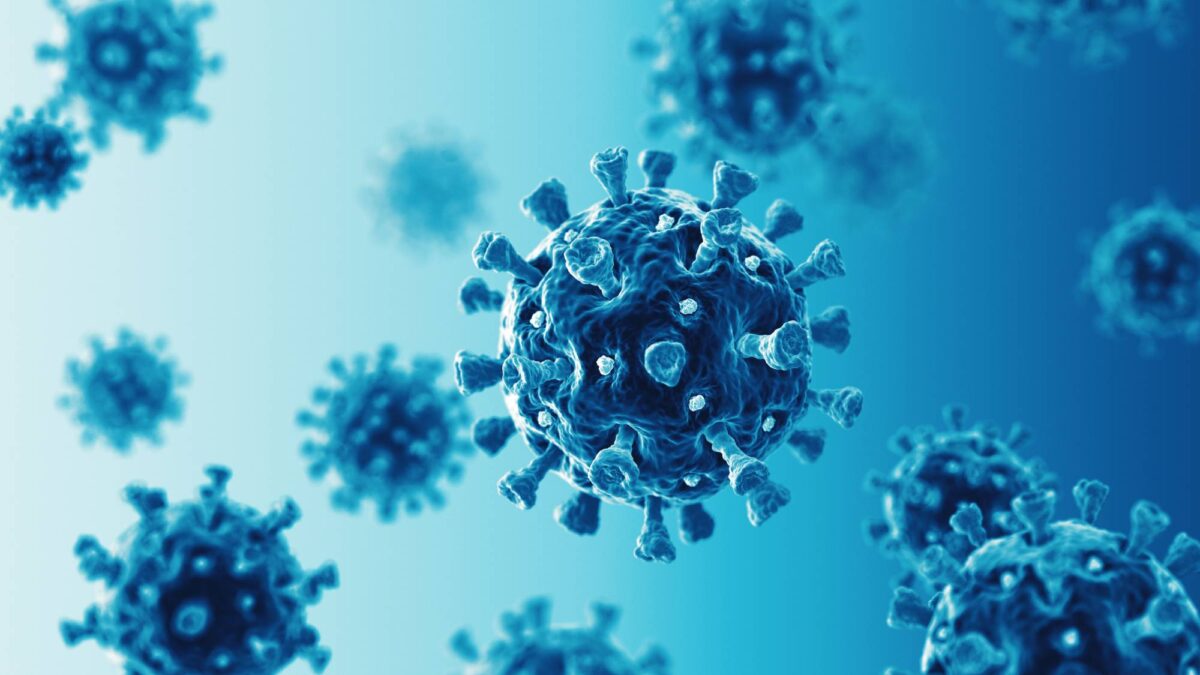Co-infection of SARS-CoV-2 and Influenza

Since December of 2019, the world has become painfully familiar with the SARS-CoV-2 virus which causes the COVID-19 disease [1]. With flu season approaching, co-infection of SARS-CoV-2 and influenza presents an additional threat.
The SARS-CoV-2 virus can incubate for 4-5 days before symptoms appear, which leads to higher transmission rates as many may unknowingly come into contact with others while already infectious [1]. Transmitted through respiratory droplets, the virus will infect epithelial cells in the upper aerodigestive tract and reproduce asymptomatically for 2 to 4 days [1]. The most susceptible cells are found in the lungs, nasopharyngeal tract, and intestines of the host [1].
Common symptoms include fever, chills, dry cough, shortness of breath, fatigue, muscle aches, sore throat, confusion, headache, and rhinorrhea, typically peaking after 6 days. Affected patients usually suffer between 7 to 14 days of acute illness before the symptoms escalate or the patient recovers [1][2]. In severe cases, the virus can cause direct organ damage, hypoxia, higher systemic inflammation, and end-organ failure [1]. The mortality rate of the virus is at 1%, and deaths have been primarily due to respiratory failure. However, in patients with preexisting cardiovascular disease or other underlying medical conditions, the associated mortality rate rises to 10% [1]. There are currently no rigorously tested and widely-available vaccines or antiviral medications to treat SARS-CoV-2, which contributes to accumulating concern regarding how the upcoming winter and flu season may exacerbate the effects of the pandemic.
The influenza virus produces annual outbreaks between the months of October to March in the northern hemisphere [3]. Of the four strains of the virus, A, B, C, and D, strains A and B are responsible for seasonal outbreaks; however, their numerous subtypes and rapid evolution make it difficult for human bodies to develop immunity year after year [3]. In the 2018-2019 flu season, 35 million patients contracted the virus, with 16 million hospital visits and 34 thousand deaths [2]. The virus is prevalent, because although annual vaccines are developed, there do not yet exist perfect antiviral therapies for the influenza virus. As a result, patients experience longer symptomatic periods and are more likely to transmit the virus to more people [1]. Some antiviral drugs such as Oseltamivir, however, have been able to shorten recovery time from the flu for patients treated within 48 hours of diagnosis [1].
The common symptoms of the flu include fever, cough, shortness of breath, fatigue, headache, myalgia, and arthralgia; these are strikingly similar to those of COVID-19, which complicates diagnosis and treatment [2]. As the influenza virus does not have durable cross-protection against infection with coronavirus, the COVI-Flu co-infection has already been diagnosed in multiple cases [1]. Both viruses are enveloped, single stranded RNA viruses encapsulated by nucleoprotein but differ in their polarities and segmentation [3]. Both can be transmitted by presymptomatic, asymptomatic and mildly symptomatic people and spread via epithelial cells in the body [3][1]. Both viruses affect IL-6, a cytokine involved with immunocompetence and infection response, which also causes cytoplasmic pro-inflammatory pathways to be upregulated and anti-inflammatory pathways to be downregulated [4][1]. The danger of co-infection of these two viruses is heightened by the fact that they are similar agents competing for the same resources in the respiratory tract and body [3].
In an early study of 115 patients in Wuhan, 5 had COVI-Flu co-infections [2]. All co-infected patients had pharyngeal pain and most also had fevers, coughs, and shortness of breath [2]. These patients were treated with oseltamivir for the influenza virus, antibiotics, supplemental oxygen, and steroids in certain cases to try and support the patient’s body as it simultaneously fought off two viruses [2]. As many countries enter into their winter season, reduced sunlight exposure, vitamin D deficiencies, and increased cohabitation of indoor spaces will weaken immune systems and create a larger risk of co-infection of SARS-CoV-2 and the influenza virus [3]. Although more research needs to be done on the exact increase in risk due to co-infection, the similarities in the viruses suggest that co-infection will undoubtedly take a larger toll on the patient’s body and increase the severity of their condition. In addition to research into treatment options and continuing to practice social distancing and good hygiene, focusing efforts on widespread vaccination programs for influenza is the best option to reduce co-infection and resulting mortalities.
References
[1] Leyfman, Y., et al. (2020). Potential Immunotherapeutic Targets for Hypoxia Due to COVI-FLU. Shock Journal. doi:10.1097/SHK.0000000000001627 [2] Konala, V. M., Adapa, S., Gayam, V., Naramala, S., Daggubati, S. R., Kammari, C. B., & Chenna, A. (2020). Co-infection with Influenza A and COVID-19. European journal of case reports in internal medicine, 7(5), 001656. https://doi.org/10.12890/2020_001656 [3] Hagen, A., M.S. (2020, August 1). COVID-19 and the Flu. Retrieved August 14, 2020, from https://asm.org/Articles/2020/July/COVID-19-and-the-Flu [4] Rose-John, S., Winthrop, K. & Calabrese, L. The role of IL-6 in host defense against infections: immunobiology and clinical implications. Nat Rev Rheumatol 13, 399–409 (2017). https://doi.org/10.1038/nrrheum.2017.83